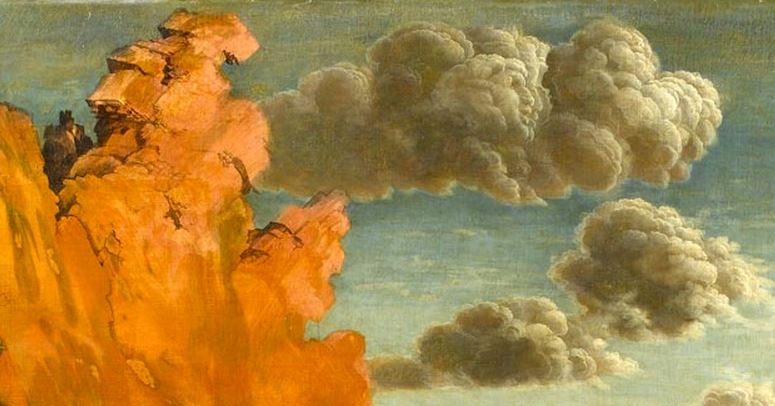
These clouds are from Andrea Mantegna's painting Triumph of the Virtues. Painted in 1502, it has been in the Louvre since 1801. There are some extra images in these clouds, images of things that are not clouds, that we can see and share. Look carefully and you may see some pareidolia, some sculptured faces, facing to our right. (It is about 2/3 over from the left and 1/4 down from the top.) There are two more faces behind the first face, further away from us. Only the profiles of the other faces are visible. You may also see one or more additional faces that look to our left, facing those faces.